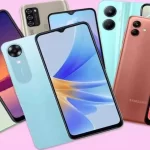Researchers have developed several self-report scales to measure problematic smartphone use, but many of these lack theoretical support and internal consistency. Further research is required to better characterize the problem and develop assessment tools to measure this problem. In the present review, a variety of scales have been developed to assess problematic smartphone use, including a scale to assess the frequency and intensity of use. This review aims to fill this gap. It is important to note that there is no single, valid scale to measure problematic smartphone use, and therefore, no one study can claim that the scale is accurate and reliable.
One study aims to examine the relationship between mobile phone usage and health in adults from southern India. The authors of this article studied the mobile phone usage habits of medical students in Chennai. The authors surveyed 110 undergraduate students in Chennai. The findings showed that many of the respondents communicate through their handsets, while others use mobile phone shops, kiosks, and phones that belong to their friends and family. A further study examined how mobile phone use influenced non-specific symptoms of ill health.
While 3G networks have limited range and are susceptible to adware and spyware, 4G is much more powerful and promises faster speeds. Some countries are already testing 4G networks, including WiMAX in North America, TeliaSonera in Scandinavia, and Vodafone in the UK. The latter two will be released in 2008, but it will take several years before the service becomes widespread in all of these areas. The European Union Council has recommended that 3G operators should cover 80% of national populations in Europe by the end of 2005.
In addition to the benefits of mobile phones, people also use them for other purposes. Some people even carry multiple mobile phones to take advantage of different calling plans. Different calling plans offer cheaper local and long-distance calls, and mobile phones can also roam. Citizen journalism and activism are now facilitated through mobile telephony. But how is mobile phone usage changing society? And what are the implications for the future? The answer is: mobile phone usage is a big part of our lives.
Handheld mobile telephones first appeared in the early stages of radio engineering. The first commercially available hand-held mobile phone, the DynaTAC 8000X, was first commercially available. The device is now a ubiquitous, indispensable piece of technology. It has revolutionized the way we communicate. It’s the primary method of communication for millions of people. The evolution of mobile telephony can be traced over several generations. There were early cellular phones that could support few simultaneous calls, and they were expensive.
In 2019, 51% of the world’s population owns a mobile device. This figure is significantly higher than the percentage of people with smartphones in Canada and China. And if we exclude China and the United Kingdom from the list, we would only see one-third of the population with a smartphone. It seems that the global population will have more smartphones than people without them. Despite this, the mobile phone market is not a stagnant industry, and there are many new models popping up every year.


 Social Media Algorithms – Decoding How They Shape Your Feed
Social Media Algorithms – Decoding How They Shape Your Feed  Review of the Top 10 Smartphones of 2024
Review of the Top 10 Smartphones of 2024  Social Media Trends – How Platforms Are Adapting to Changing User Behaviors
Social Media Trends – How Platforms Are Adapting to Changing User Behaviors  The Development of PC Hardware – From CPUs to GPUs
The Development of PC Hardware – From CPUs to GPUs  Can You Use WhatsApp on a Computer?
Can You Use WhatsApp on a Computer?  Data Privacy Regulations
Data Privacy Regulations  The Race for 5G – A Global Perspective
The Race for 5G – A Global Perspective  The Growing Importance of Cybersecurity in a Digital World
The Growing Importance of Cybersecurity in a Digital World  Cheap Internet Options
Cheap Internet Options 